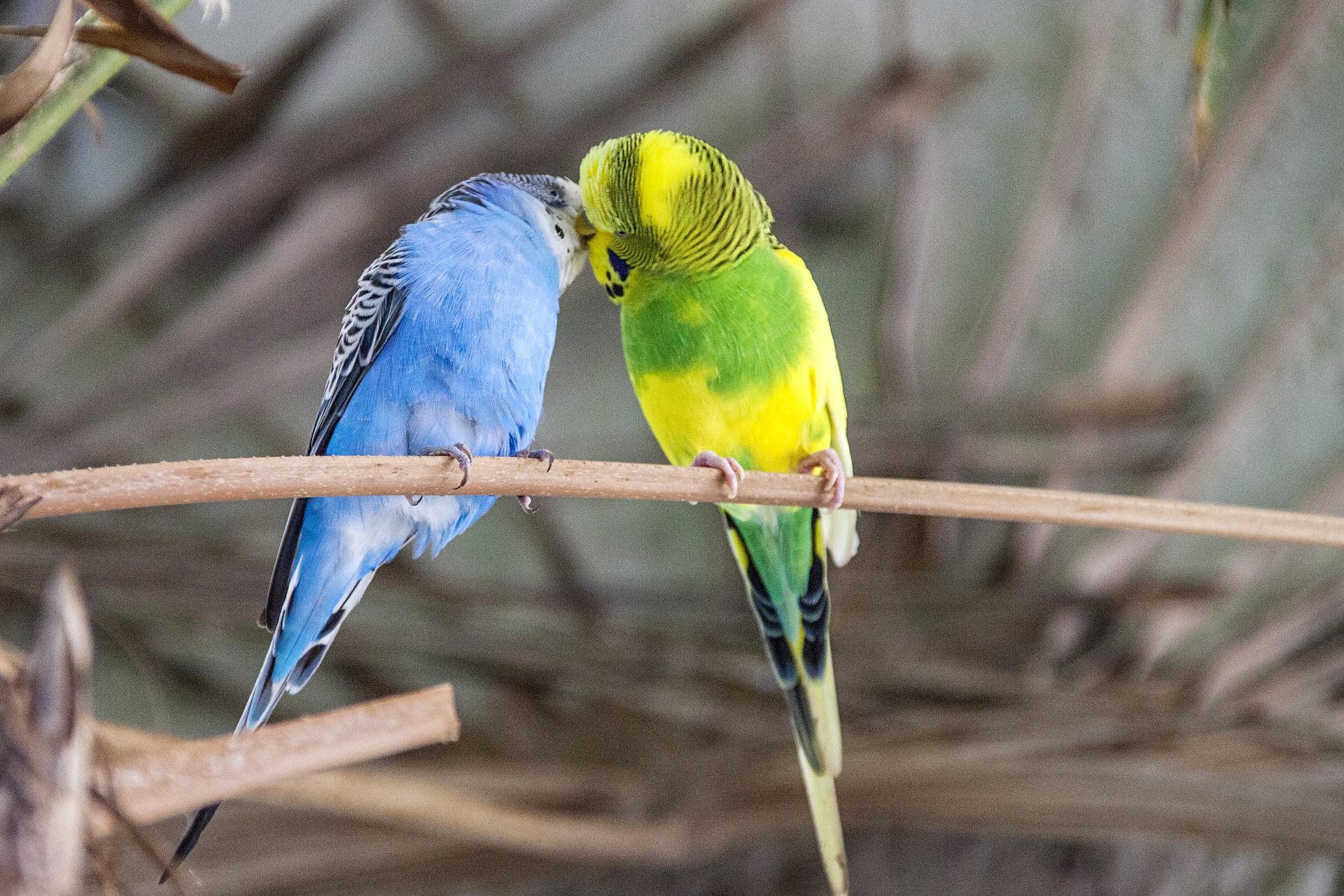Female Parakeets Flock to Birds With Brains
Problem-solving skills appeal to budgies.

Bird brains get mocked a lot. Rather unfairly, too. Birds are, in the words of Gizmodo, “freakishly smart.” Crows, in particular, are famously intelligent, but even outside the Corvidae family, our avian pals are constantly surprising us with their cognitive abilities.
And it turns out we aren’t the only ones who are charmed by their intellect. A new study from a team of researchers from the University of Chinese Academy of Sciences and Leiden University in the Netherlands suggests that birds themselves prefer the company of brainier buddies. Their results are published in Science.
Budgerigars, also known as budgies or parakeets, are nomadic birds that call Australia home. Their natural habitats are the grasslands and open woodlands, where you can find them nestled inside the hollow of eucalyptus trees. Their neon green and blue plumage is unmistakable. Budgies travel in flocks of up to 100 and can be seen soaring across the countryside skies. The famous ornithologist and artist John Gould described them as, “the most animated, cheerful little creatures you can possibly imagine,” even though he also ate them.
Budgerigars belong to the Psittaciformes order, members of which are renowned for their intelligence. These birds are capable of vocal learning, mimicking, and can be trained to open boxes. With this innate brain power in mind, the team put their theory to the test.
“The idea that sexual selection might play a role [in the evolution of cognition] has been around, but so far there existed only indirect evidence, such as that males are better at learning a task,” says Dr. Carel ten Cate, one of the study’s authors, in an email. “However, whether direct observation of a ‘smart’ behavior could affect mate choice had not been studied,” he adds. “So we worked out a way of how this might be tested.”
Thirty-four male budgies were paired to 17 female counterparts. The researchers placed the birds together with the female in a two-choice cage. The bird she spent the most time around was deemed more desirable.
After allowing the female bird to choose her preferred partner, the researchers then taught the non-desirable bird how to open two devices containing food, a petri dish and a three-step box—a bird-box if you will, although the budgies weren’t blindfolded.
Each male bird was then placed in a cage, along with the box and petri dish, facing the female budgie. The females then watched as the formerly less desirable males successfully solved both puzzles to get food, while the more desirable birds, who did not receive any training, struggled. After this brainy display, the two males were placed back together and the female budgie had to choose again.
In almost every instance, the female bird spent more time next to the previously undesirable budgie. However, when these less desirable birds had free access to food and did not need to solve a problem, the females opted for the males they were more attracted to from the onset, even though the preferred birds had no food. This suggested that it was the ability to solve problems, and not access to food, that mattered to the female birds.
However, there are other ways of interpreting the behavior of the female budgies. According to Dr. Georg Striedter of the University of California, Irvine, who published an analysis of the study in the same issue of Science, the female birds could have been attracted to the strength of the males. “We pointed out that the females may not have realized that the males were solving a complex problem,” writes Striedter in an email. “Maybe the females just thought the males were very strong (i.e., brawny).”
Female budgerigars incubate, brood, and feed their young after hatching, while males take care of foraging and bringing back food, hence why solving a problem for food was so attractive. The seeds that budgies eat are plentiful across their range and throughout their habitat. However, if rain becomes scarce, seeds could become a rarity requiring some unique foraging skills to obtain.
“If droughts in their natural habitats last long, such seeds are depleted and they search for other foods in other environments,” says Cate. “This may require exploring and extracting hidden foods. The abilities that budgies may have to cope with such critical bottlenecks in their life will then determine their survival.”
While birds have evolved over time to strut, pose, and show off the goods to attract mates, the ability to bring home the seeds can be just as attractive and life-saving as a dreamy plumage.





















Follow us on Twitter to get the latest on the world's hidden wonders.
Like us on Facebook to get the latest on the world's hidden wonders.
Follow us on Twitter Like us on Facebook